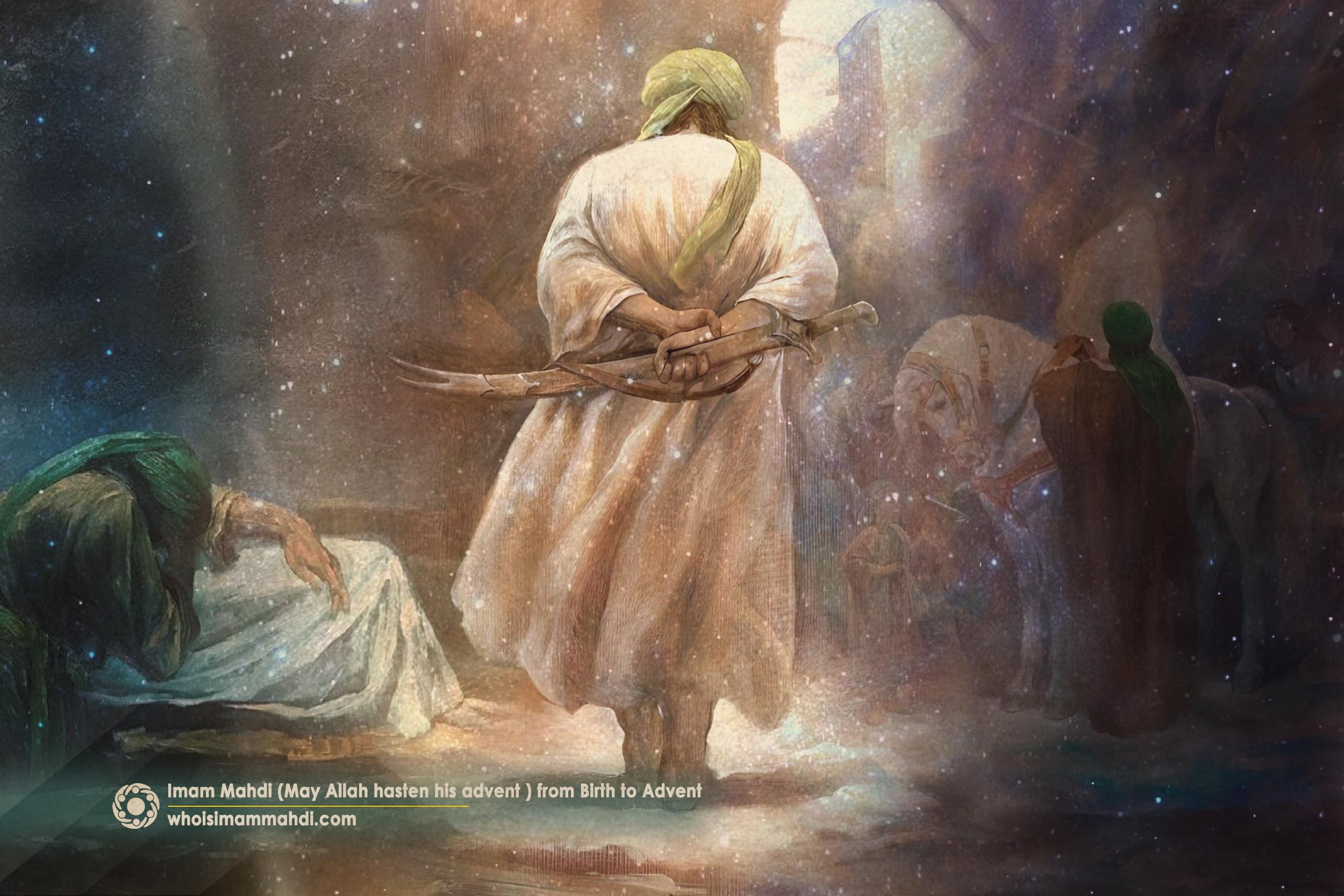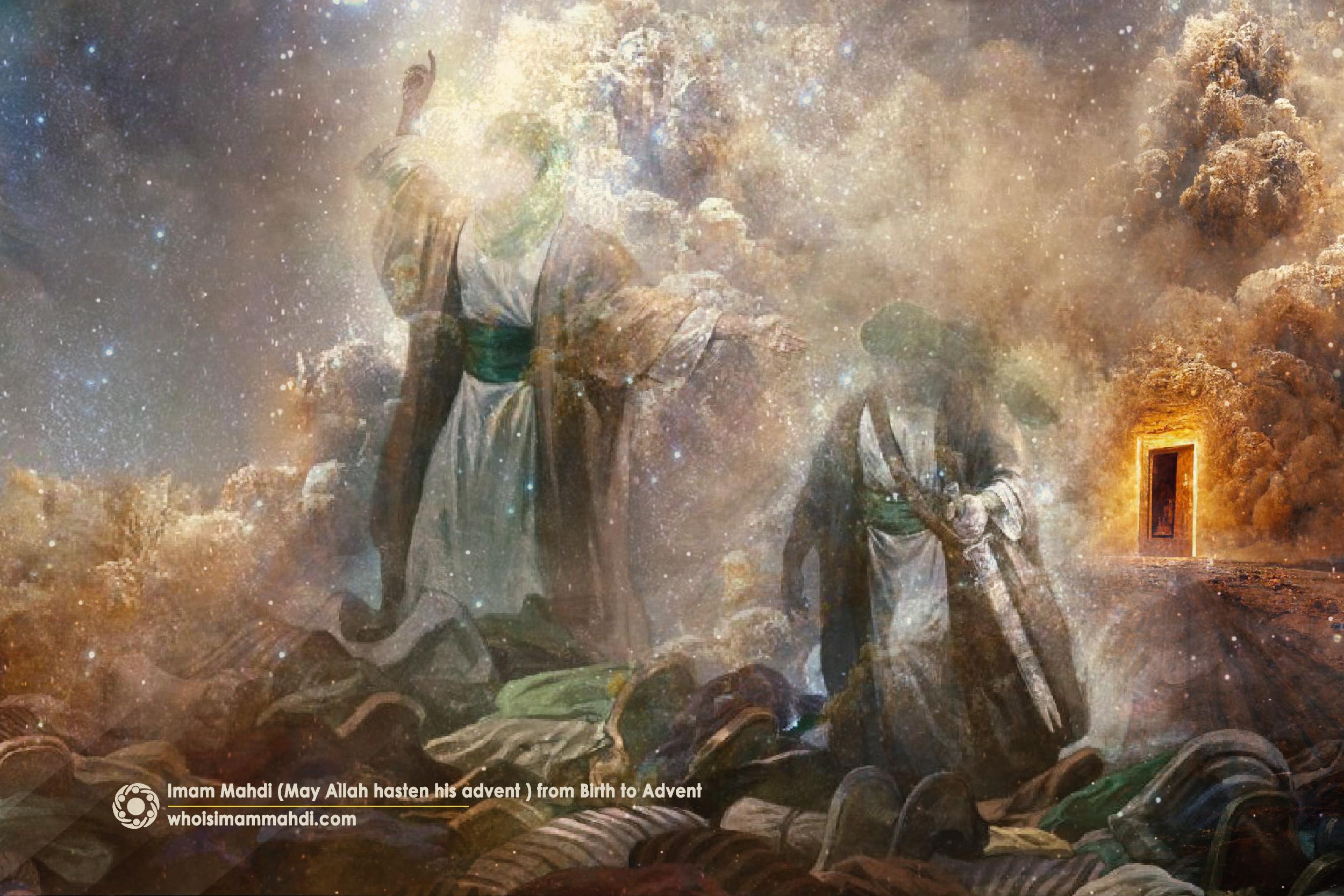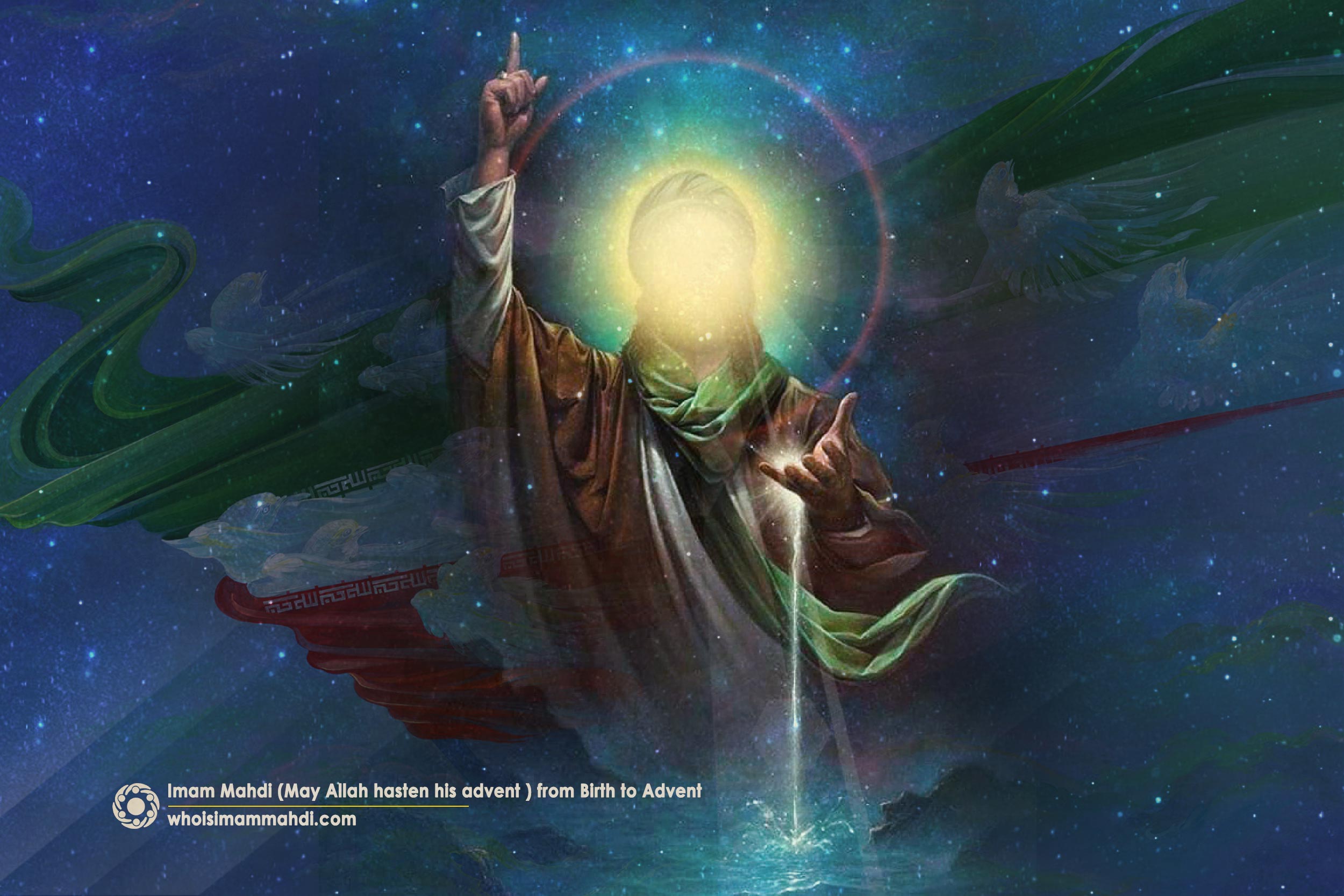An Overview of the Political Life of Imam Hasan Askari (PBUH) and His Goals During His Imamate
Hazrat Hasan ibn Ali (PBUH), the son of Imam Hadi (PBUH), is the eleventh Imam of the Twelver Shia. His mother’s name was Hadith or Sawsan.[1] When Imam Hadi (PBUH) was exiled from Medina to Samarra by the order of Mutawakkil, the Abbasid caliph, Imam Askari was still a child and accompanied his father. Most of Imam Hasan Askari’s honorable life was spent in Samarra. “Askar” means army in Arabic, and it refers to a military garrison area in Samarra where opponents of the Abbasids were transferred, and their movements, communications, and visits were monitored.
Imam Hasan Askari (PBUH) became the Imam at the age of twenty-two, and his Imamate lasted for about six years.[2] After the martyrdom of Imam Hadi (PBUH), the issue of his succession faced numerous challenges. His brother, Ja’far, who was known as Ja’far the Liar, claimed to be the next Imam. He was a debauched and deceitful man, and Imam Hadi (PBUH) had never trusted him, consistently advising Shias to stay away from him. Imam Hasan Askari (PBUH) did not give Ja’far the Liar any opportunity to maneuver, but after the martyrdom of the Imam, he denied the birth of Imam Mahdi (AJ) and again claimed Imamate, leading some people astray. Many sources mention that during his Imamate, he was contemporaneous with al-Mu’taz, al-Muhtadi, and al-Mu’tamid, the Abbasid caliphs.[3] However, in Al-Ghayba by Sheikh Tusi, there is also mention of al-Musta’in, the last Abbasid caliph. The Abbasid government imposed severe confinement and surveillance on the Imam. In fact, he was detained in the military camp of Askar, to the extent that the government required him to continuously report his presence. The Imam’s servant would go to the caliphate every Monday and Thursday to announce the Imam’s presence in the area.[4] The Imam was imprisoned for several days during the time of al-Musta’in, and reports of his imprisonment during the reigns of al-Mu’taz, al-Muhtadi, and al-Mu’tamid are also mentioned in credible sources.
The early infallible Imams were more cautious about openly claiming their leadership role because of safety concerns and the need to protect Shia beliefs. But later Imams were more open about being the leaders of the Shia community. The Abbasids spared no effort in tormenting the Imams (PBUT), yet they dared not openly kill them.
Despite the circumstances mentioned, Imam Hasan Askari (PBUH) did not see taqiyya[5] as suitable for his time and chose to declare his Imamate publicly. During this period, the inner guidance provided by the Imam and the unveiling of his spiritual magnanimity intensified. This had occurred less openly with previous Imams (PBUT), especially the earlier ones, but it had drawn public attention and become a topic of conversation among people.
Imam Hasan Askari (PBUH) was engaged in significant actions during this time, efforts such as simplifying complex Shia concepts into accessible and practical content for daily life, transforming the individual and passive lives of Shias into organized and active ones, and compiling scattered teachings that had been passed down over hundreds of years by other Imams (PBUT). He effectively processed the network of delegation that had been developed over decades by previous Imams (PBUT) in the best possible manner and handed it over to Imam Mahdi (AJ). The 250-year period of the Imamate of the first eleven Imams was merely a precursor that prepared the conditions for the era of occultation, the Imamate, and the establishment of a global government and a new global civilization by Imam Mahdi (AJ).
The twelve infallible Imams (PBUT) were comrades-in-arms who fought side by side to guide humanity to live in the global Noble Rule of the Righteous. They were the specialized experts in designing, building, and implementing a new Islamic civilization, each playing their specific role in this cohesive and organized structure.
Important Actions of Imam Hasan Askari (PBUH) During His Imamate
After the Messenger of Allah (PBUH), the Shia community was like an infant that needed to be nurtured according to times and circumstances. The years of suffering endured by the Imams (PBUT) included the long silence of Imam Ali (PBUH) for decades, the heroic flexibility of Imam Hassan (PBUH) with his Peace Treaty with Mu’awiya, the uprising of Imam Hussain (PBUH), decades of isolation and education of people through supplication and prayer by Imam Sajjad (PBUH), the cultural and scientific movement initiated by Imam Baqir and Imam Sadiq (PBUT), the revival of the secret network of delegation by Imam Kazim (PBUH), the public promotion of the Shia school from the governmental platform by Imam Reza (PBUH), fighting misguided sects and engaging in scientific endeavors in childhood by Imam Jawad (PBUH), and the revival of Shia knowledge through the words of the infallible Imam and preparing the minds and hearts of the people to receive the truths of Shia teachings by Imam Hadi (PBUH). All these roles were adjusted based on the circumstances for the growth of the Shia.
Imam Hasan Askari’s leadership began at a time when the previous infallible Imams had already laid the groundwork for educating the Shia community and establishing their religious framework. Imam Hasan Askari (PBUH) had to make the final effort to ensure that the Imamate would safely transfer to Imam Mahdi (AJ). In this regard, he pursued important goals:
- Heavy Shia Concepts Had to Become Easy and Understandable
Thanks to years of effort by the previous Imams (PBUT), a substantial amount of knowledge, fiqh, rulings, and complex principles of the Shia school had been conveyed to the people. The challenge was that these precious contents were trapped in the hands of scholars and elites who spoke in difficult and complicated terms, making it hard for the general public to understand. Imam Hasan Askari (PBUH) undertook a monumental task. With the help of his insightful and dedicated companions, he started a significant scientific and cultural revolution. Imam Hasan Askari (PBUH) made complex religious concepts, often difficult to understand and apply in everyday life, accessible to ordinary Shias. He turned profound teachings into practical habits and behaviors, making them an integral part of daily life. If Imam Hasan Askari had not made Shia teachings easier to understand, we would not be able to experience them in such a clear and inspiring way today.
- The Shia Had to Shift from Theoretical Phase to Operational Phase
Due to the harsh conditions that Shias had endured for hundreds of years, they typically kept their beliefs hidden and avoided openly and publicly practicing their rituals. Of course, during Imam Reza’s Imamate and his succession to caliphate, conditions improved significantly, allowing Shias to bring their beliefs out from their homes into society. Following that, Shias had to continue practicing discretion during the time of the subsequent Imams. However, in the era of Imam Hasan Askari (PBUH), the Imam changed his strategies in light of new circumstances. He instructed all Shias to unite in performing their rituals and adhering to their religious practices openly. For example, performing nafilahs[6]in public, Shia congregational prayers, saying Bismillah[7] loudly in prayer, and using soil for prostration were directives from Imam Hasan Askari (PBUH), aimed at preserving the outward expressions of the Shia faith.[8]
One important law that Imam Hasan Askari (PBUH) established for his followers was that they should prioritize collective unity and teamwork. The pilgrimage of Arbaeen is one of Imam Hasan Askari’s purposeful legacies for the Shia; although the narration regarding the Arbaeen pilgrimage is attributed to Imam Sadiq (PBUH), until Imam Hasan Askari’s time, this pilgrimage was sometimes conducted secretly. However, the serious establishment and public promotion of group pilgrimage on Arbaeen stemmed from Imam Hasan Askari’s earnest recommendations and organizational guidelines.
Since he was closest to the era preceding the occultation of Imam Mahdi (AJ), he focused on fostering organizational structures and collective unity among Shias. He understood well that the advent of the Savior and the establishment of a new global civilization depended on the collective unity and organizational character of the Shia community.
- Dispersed and Unorganized Shia Works Had to Be Collected and Organized
Until the time of Imam Hasan Askari (PBUH), the rulings, fiqh, and teachings of the Shia school were recorded in scattered and unorganized manuscripts by the students of the Imams (PBUT). By that era, if someone sought an answer to a question or clarification on a matter, they had to search among thousands of fragmented and disorganized writings, or they had to access the Imam directly and ask him personally. Otherwise, they would have to rely on someone whose words they could not fully trust.
Despite severe confinement and oppression, Imam Hasan Askari (PBUH) played a very significant role in compiling important Shia sources, reference books, and other works. Works such as the sources of Man La Yahduruhu al-Faqih, the sources of Kitab al-Kafi, Basa’ir al-Darajat, and the sources of Al-Tahdhib were compiled during the time of Imam Hasan Askari (PBUH) through his efforts and those of his students. Imam Hasan Askari (PBUH) and his companions were the guardians of Shia cultural heritage.
The Secret Network of Delegation of Imam Hasan Askari (PBUH)
To better understand the Secret Network of Delegation of Imam Hasan Askari (PBUH), it is necessary to delve into the background of this organization, its role, and its structure.
The Background of the Network of Delegation of the Ahl al-Bayt (PBUT)
The network of delegation of the Ahl al-Bayt (PBUT) began to take shape years before Imam Hasan Askari (PBUH). Although there was no cohesive and organized structure for the network of delegation until the time of Imam Baqir and Imam Sadiq (PBUT), general representatives of the Imams (PBUT) were present in certain areas. In general, the formation of the network of delegation of the Imams (PBUT) began during the time of Imam Baqir and Imam Sadiq (PBUT), became stronger during Imam Kazim’s (PBUH) era, faced deviations afterward, was purified and refined by Imam Reza (PBUH), was revived and organized by Imam Jawad (PBUH), and then reached its peak of power and influence during the era of Imam Hadi and Imam Hasan Askari (PBUT).
The Role of the Network of Delegation of the Ahl al-Bayt (PBUT)
The Shia population was rapidly expanding, and people in Shia regions did not have access to the Imams. Since the Imams were often under surveillance by the ruling government and lived under specific security conditions, they had to devise a way to communicate with their followers safely and more effectively. The secret network of delegation provided a reliable means for the Imam and Shias to connect and address their needs.
The duties of the network of delegation included establishing communication between the Imam and people, collecting religious dues and delivering them to the Imam, exchanging correspondence between the Imam and people, promoting Shia teachings, introducing the status of the Imam to the public, clarifying issues during crises, and guiding people on behalf of the Imam during tumultuous times.
The Imam endeavored to train Shias in various ways for the period of occultation. It was destined that after a while, Shias would experience centuries without an infallible Imam; thus they needed to learn what lifestyle to adopt during his absence. The network of delegation was an effective means for learning organizational life during the occultation.
The Structure of the Network of Delegation
The structure of the network of delegation included the leader of the network and a group of trusted individuals selected by the Imam called delegates:
– Leader of the Organization:
The Imam of each era served as the leader of the organization. The Imam had specific responsibilities, such as selecting delegates, dismissing and appointing them, managing financial affairs, training delegates, guiding and managing the network, and overseeing its progress along the correct path.
-Deputies and Delegates of the Imam:
During the time of Imam Hasan Askari (PBUH), the network of delegation maintained its specialized structure and became even more specialized. The delegates of the Imam had a specific organizational hierarchy. After the Imam, the ranking within the organization was designated to the “Bab or Wali al-Wukala,” who was the executive manager of the organization. The Bab of Imam Hasan Askari (PBUH) was Uthman ibn Sa’id Amri, who had previously served as the Bab for Imam Hadi (PBUH). He supervised the work of other subordinate delegates in various regions.
The Imam assigned a specific delegate for each Shia region. Not only did regional delegates exist, but also mobile delegates, propagating delegates, and other representatives who did not have direct communication with the Imam. Operations were conducted in a highly organized manner. Each delegate communicated only with his specific responsible manager or Bab. Delegates transmitted news, religious dues, and letters to their designated organizational commander, who then conveyed matters to the Imam through secure and safe methods, often via correspondence and occasionally in person.
In situations where the Abbasid caliphs imposed strict conditions on the Imam, new upheavals created additional challenges. For instance, many individuals coveted and were jealous of the position of Bab and its privileges. Some of them were agents of the government seeking to undermine the status of the Imam and Shias or to find out the secrets of the network. These traitors caused division and confusion among Shias; to attract more followers, they spread lies and false promises while attributing divinity and godhood to the Imam.
In this article, we provided an overview of the key and crucial role Imam Hasan Askari (PBUH) played in the 250-year struggle of the eleven Imams, illustrating how the Shia school of thought was preserved until the eleventh Imam (PBUH) and how he managed to navigate through these crises, preparing the Shia for the period of the occultation of Imam Mahdi (AJ) and the establishment of the new global civilization.
[1] Nahleh Gharavi Naeini, Shi’ah Women Transmitters of Hadith: A Collection of Biographies of the Women Who Have Transmitted Traditions, trans. Engr. Gail D. (Mahjubah) Babst. Qom: Ansariyan Publications, 2011, p. 225.
[2] Ayatullah Murtadha Mutahhari, A Survey into the Lives of the Infallible Imams, trans. Zainab Muhammadi Araqi. AWBA Publishing and Printing Center, p. 121.
[3] Baqir Sharif al-Qurashi, The Life of Imam Hasan Al-‘Askari, tans. Abdullah al-Shahin. Qom: Ansariyan Publications, p. 97.
[4] Ayatullāh Jaʿfar Subḥānī, Shīa Islam: History and Doctrines, chapter 31.
[5] The practice of concealing one’s belief and foregoing ordinary religious duties when under threat of death or injury
[6] Nonobligatory prayers
[7] In the name of Allah
[8] Mohammad-Baqer Majlesi, Bihar Al-Anwaar, vol. 82, H. 7, p. 63.






































































